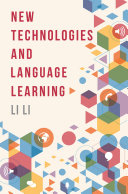

Most ebook files are in PDF format, so you can easily read them using various software such as Foxit Reader or directly on the Google Chrome browser.
Some ebook files are released by publishers in other formats such as .awz, .mobi, .epub, .fb2, etc. You may need to install specific software to read these formats on mobile/PC, such as Calibre.
Please read the tutorial at this link. https://ebooknice.com/page/post?id=faq
We offer FREE conversion to the popular formats you request; however, this may take some time. Therefore, right after payment, please email us, and we will try to provide the service as quickly as possible.
For some exceptional file formats or broken links (if any), please refrain from opening any disputes. Instead, email us first, and we will try to assist within a maximum of 6 hours.
EbookNice Team

Status:
Available0.0
0 reviews
ISBN-10 : 1350308091
ISBN-13 : 9781350308091
Author: Li Li
This research-led textbook investigates the use of new technologies for language learning, linking theory to practice. The book synthesises previous technology use (including Computer Assisted Language Learning) theory and research, and describes practical applications for both second and foreign language classrooms, including detailed examples of these applications and the procedures for evaluating them.
1 An overview of new technologies in language education
What does using technology in language learning mean?
Technology in education: the global picture
Technology use in language education
Learning theories
Technology and pedagogy
Technology development in language learning
Summary
Annotated further reading
2 The role of technology, motivation and SLA
Introduction
Key factors contributing to effective second language learning
Affordances and roles of technology
Focus on motivation
Summary
Annotated further reading
Part B Technology, Language Skills and Knowledge, and ESP
3 Technology and developing interactional skills
Introduction
Developing speaking and listening skills
Interactional comeptence
Summary
Annotated further reading
4 Reading, writing and online literacy
Introduction
Writing and technology
Reading and technology
Online literacy
Summary
Annotated further reading
5 Technology for lexicogrammatical acquisition
Introduction
How vocabulary and grammar are learnt
Technology use in vocabulary and grammar teaching
A lexicogrammatical approach
Future directions and considerations
Summary
Annotated further reading
6 Technology and ESP
Introduction
ESP and its characteristics
Benefits of technology in ESP contexts
Principles for integrating technology in ESP
Technological tools for teaching ESP
Summary
Annotated further reading
Part C Feedback, Materials and Teachers
7 Feedback and alternative assessment
Introduction
Focus on feedback
Focus on assessment (tests)
An alternative assessment
Summary
Annotated further reading
8 E-learning material evaluation and design
Introduction
What is materials evaluation?
Frameworks for evaluating e-learning materials
Contextualising and adapting CALL tasks and materials
Summary
Annotated further reading
9 Language teachers and new technologies
Introduction
Language teachers’ attitudes towards using technology in teaching
Factors contributing to technology use in teaching
The role of teachers in technology-enhanced language teaching
The role of technology
Technology integration framework
Summary
Annotated further reading
References
a new technology
learning new language benefits brain
language learning technology
new technologies and language learning li li
c programming language textbook
Tags: New Technologies, Language Learning, Li Li, investigates